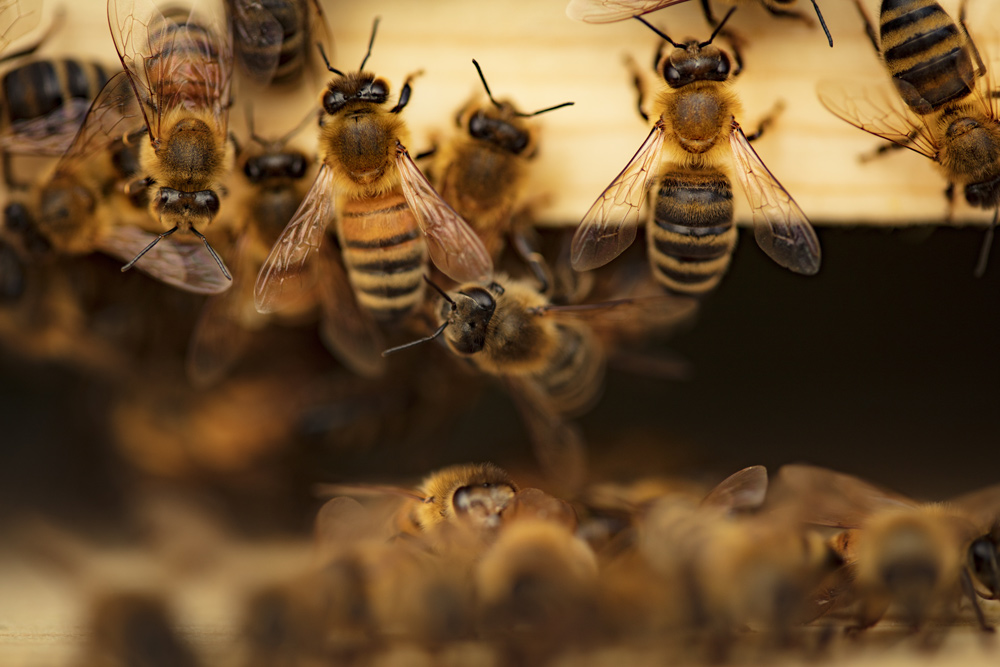Original Article: https://blog.theanimalrescuesite.greatergood.com/honey-bee-pledge/
In the United States, pollinating insects are responsible for 90% of all flowering plants and more than a third of all crop production, the USDA reports. Without them, we could be facing severe food shortages and skyrocketing costs on produce we might otherwise take for granted.
That’s a future many would like to avoid, but one we may be headed toward.
As Mother Jones reports, a century of heavy pesticide usage has not been kind to the honey bees of North America. In the last few decades a new class of insecticides called neonicotinoids have contributed in no small measure to hive collapse. Many e birds in the United States, where bird populations have dropped by an estimated 29 percent since 1970, bird species are also dying out or in danger due to the presence of neonicotinoids in their food chain.

Bees are disappearing rapidly.
According to NPR, neonicotinoids, unlike other pesticides that coat the surface of a plant, become integrated with the cells of the target, eventually being expressed in pollen strains, ingested by bees. Once transmitted to pollinators, the substance attacks the nervous system, leading to confusion and death. Given the widespread use of these insecticides, that single example has been multiplied by billions across the whole of Europe, year after year.
Even worse than pesticides, climate change is now wiping bees out in record numbers.

Pesticides have contributed to massive hive collapse.
Bees have been losing hives in key habitats ever since the 1970s. According to a study in Science, “Bumblebees have not shifted northward and are experiencing shrinking distributions in the southern ends of their range. Such failures to shift may be because of their origins in a cooler climate, and suggest an elevated susceptibility to rapid climate change.”
It’s estimated that their geographic coverage worldwide is contracting by 5 miles each year.
And at least 4.6 million hives have collapsed since 1947, according to U.S. National Agricultural Statistics, a 60 percent drop that continues to this day.

Government organizations and scientists are collaborating on ways to save the bees.
The USDA’s Agricultural Research Service is looking at ways to improve bee colony health and stem the threat of the Varroa mite. Treatments for Colony Collapse Disorder (CCD) are being studied, and a bee gene bank has been set up to help researchers understand more about the particular traits that could protect future insects from CCD. University of Nevada researchers are experimenting with a virus that attacks a bacterial disease that affects honey bees, and Michigan State University scientists are developing sustainable pollination strategies such as enhancing the effect of bee-friendly wildflowers.
Teams of scientists around the country, and the world, are taking the disappearance of the honey bee seriously, and you can, too. It starts with taking small steps, like planting wildflowers in your yard or community.

You can save the bees — take the Honey Bee Pledge!
“Parks, roadsides and government lawns are all perfect for wildflowers and pollinator-friendly plants,” reports Environment America. We’re calling on cities, counties, states and the federal government to commit to planting wildflowers and other plants that benefit bees.”
As an individual gardener, you can help bees by leaving harmful pesticides alone or by opting for produce grown through sustainable practices.
There are other ways you can help bees, too. Start by taking the Honey Bee Pledge. Click below to make a difference.
Source: The Animal Rescue Site Blog












